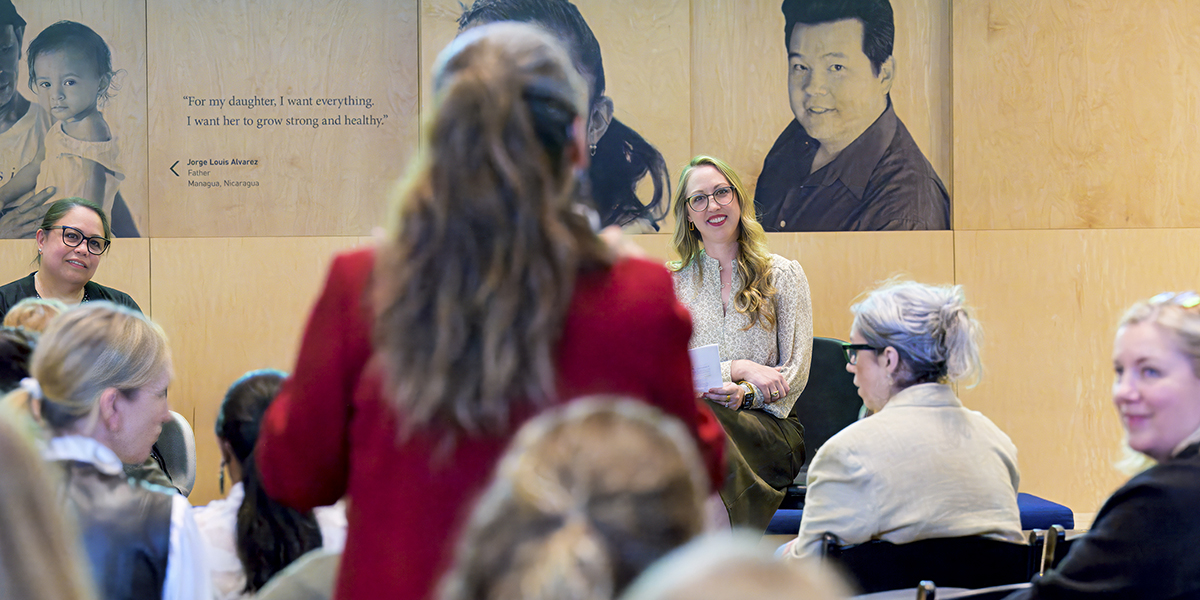These four steps will move your organization from a traditional workforce model to a blended workforce that is future-prepped. In this new model, teams will effectively operate in an innovative, efficient, and diverse blended workforce, where employees and contract team members work in concert to drive business performance and advance the mission of your organization.
The value props for implementing a blended workforce are obvious – a flexible, more efficient P&L; a workforce designed to keep pace with customers and competitors; accelerated innovation and retention of top talent. The process of implementing a blended workforce may not be so clear, but it can be done in just four steps.
Step 1: Define business outcomes
You can design a blended workforce roadmap, but first you must declare the destination.
Regardless of business size or maturity, defining a company’s target outcomes is that thing you just have to do, and it’s non-negotiable when implementing a blended workforce.
Documenting outcomes unleashes leadership, the broader team, and work community to focus its resources – skills, capacity, and dollars – on the most important activities. All resources must ladder up to successfully achieving the defined business outcomes. We call this ruthless prioritization. Choose what matters and don’t let that shiny object glistening in the late August sun distract you. Stay focused and the results come.
With business outcomes tattooed on the hearts and minds of the organization, leaders can critically assess whether the team has the right skills and capacity to achieve the defined outcomes. Terrified of this next step? Have real conversations with the team – this is both an org planning motion and a career development opportunity for your team.
When leaders and team members know where they’re headed, objectively matching the team’s existing skills and capacity to key outcomes and documenting gaps feels like an exercise in sanity. Of course, we can’t pivot outcomes year-over-year and not inject new skills and capacity – you knew that all along! But each time you did the mental gymnastics, you were trying to fit a square peg into a round hole because your talent budget was fixed with full-time employees. Leaders working in a blended workforce model design a dream team best positioned to win at work now, with the agility to move employee and contracted skills and capacity to the right places at the right times to continue advancing their progress toward goals over time.
How to establish an effective and sustainable business outcomes framework
Let’s use our company, Lions & Tigers, as an example. At Lions & Tigers, we practice OKRs to define business outcomes and ensure that the team is clear about where to focus. OKRs are Objectives and Key Results. Objectives are bold, yet achievable, aspirational business goal statements and are intended to carry forward with a company year-over-year with limited change to the language, barring any major strategic or mission shifts. Key Results are set annually and reviewed quarterly. Key Results are the defined, measurable outcomes that indicate the business is moving toward its Objectives.
At Lions & Tigers one of our three company objectives is:
Empower all stakeholders to operate with confidence and joy
Some examples of key results you might align to that objective, depending on drivers you uncover in your business, are:
- Transition 100% of business reporting into Power BI
- Improve company’s Glassdoor rating to 4.5
- Eliminate two manual steps in the new client onboarding experience
This practice provides the team with a reliable framework for making difficult trade-off decisions and guidance in aligning the company, individuals, and teams to the most important work. We call this Magnets, Momentum & Maximums as discussed in our open-source playbook.
Defined business outcomes, like OKRs, inform resourcing decisions, investments, reporting, rhythms of business and individual and team performance, driving consistency in how the entire company defines success. Rooting all decisions in OKRs makes it clear how every element of the business – strategies, people, and operations – impact successful outcomes.
What is the right number of business outcomes?
Typically, we recommend that organizations land two to three Objectives, with a maximum of three Key Results per objective. Often, we’re met with wide eyes with a side of “that’s impossible.” Promise it’s not. Narrowing focus is not easy up front, but the long-term payoff is so worth it. The cultural, strategic, and practical payoff is real. Focused goals + collective effort = shared success.
Expect to spend several rounds with your team landing the most important Objectives and Key Results. Involve stakeholders at all levels at various points in the process to drive buy-in, reflect diverse perspectives, and waterfall outcomes to ensure everyone is clear about what the goal is and how their work accrues to success.
When you reduce the number of business outcomes on the board, you free leadership and team members to say no to applying skills, time, and energy to activities that will not drive business impact. The result is more effective spend and greater team engagement. Companies with a highly engaged workforce are 21% more profitable and 17% more productive than those with disengaged staff. When everyone sees their work reflected in company wins because all departments are prioritizing the most important work to move forward together, you get engaged team members who show up with passion, purpose, presence, and energy.
Interested in learning more? Read the full series below.
How to Implement a Blended Workforce
Step 1: Define business outcomes
Step 2: Know the numbers that matter
Step 3: Assemble the dream team
Step 4: Do it. Integrate a blended workforce
Written by Ashley Jude








0 Comments